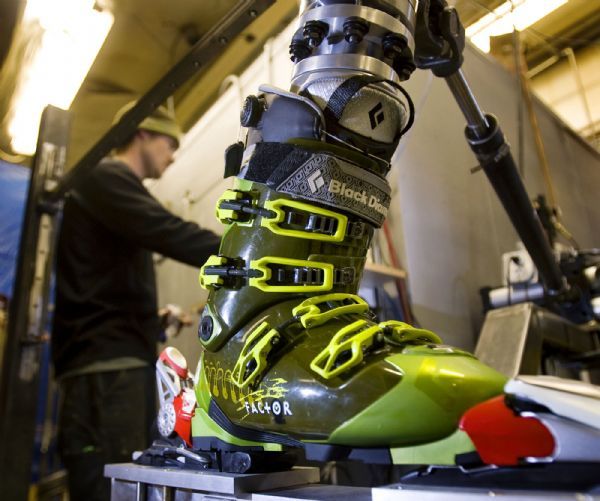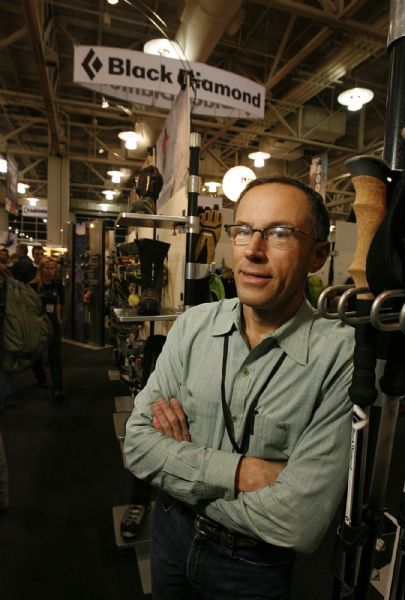This is an archived article that was published on sltrib.com in 2010, and information in the article may be outdated. It is provided only for personal research purposes and may not be reprinted.
Peter Metcalf knew the business model he followed for two decades in building Black Diamond Equipment Ltd. from scratch into a $100 mil- lion-a-year company was insufficient to carry the Salt Lake County-based firm far into the future.
But now Metcalf believes he has found a partner with the financial resources to grow in a global economy. Clarus Corp., a publicly traded Connecticut company with no operations but lots of money to invest and $200 million worth of tax-loss credits, announced Monday that it is buying Black Diamond for $90 million.
A newly created company will continue to carry the Black Diamond name and retain Metcalf as its president and CEO. But it also will offer a broader line of respected outdoor products. As part of the deal, Clarus purchased Sacramento-based Gregory Mountain Products Inc. for $45 million and will integrate it into Black Diamond's operations.
"The golden years of Black Diamond are not behind us but clearly ahead," Metcalf said Monday, noting that "nobody in Salt Lake will lose a job over this." Black Diamond has 220 employees at its manufacturing, distribution and retail center at 2090 E. 3900 South in Holladay, plus another 160 workers in Europe and Asia.
The Utah staff could grow with some employees of Gregory. Its emphasis on technical backpacking and mountaineering products is expected to complement Black Diamond's gear for rock climbers, ice climbers, Alpinists and freeride skiers.
"We haven't gotten into the details of what stays in Sacramento and what may move to Salt Lake," Metcalf said, noting that Gregory's brand name will be retained but there could be some management consolidation.
Clarus and Gregory already were closely intertwined. Gregory had been owned by Warren Kanders and Rob Schiller, who are managers of Clarus and will become the executive chairman and vice chairman of the board of the new Black Diamond -- essentially Metcalf's bosses.
Metcalf said he was willing to forgo his independence as boss because Clarus's deep pockets will allow Black Diamond to compete against leading world companies in the years to come. For him, personally, the management structure will allow him to bow out of the business in the next few years after the merger is solidified.
"Black Diamond is here to make a difference -- in access issues, safety issues or just developing innovative and unique products. If I can help that mission by not being at the top of the pecking order, that's fine," he said. "I'm 55 now. I'm still passionate about my work activities, but I'd like to get out of here before I'm old and decrepit."
Clarus has large cash reserves from the 2002 sale of its interests in an e-commerce software business.
After spending almost eight years trying to determine where to invest that money, chairman Kanders told shareholders in a letter Monday that "we set a high bar for the companies we considered, and I am very pleased to report that the new platform company created through these transactions [Black Diamond plus Gregory Mountain Products] meets all of the criteria which guided our analysis."
Metcalf said he met Clarus co-manager Schiller at an industry trade show two years ago, introduced by a former employee then working for Gregory Mountain. They exchanged ideas, but had no interaction for more than a year. By then, Metcalf and the Black Diamond board were looking seriously at building for an increasingly competitive future in the global marketplace.
"You are most creative, resourceful and discriminating when you're doing something out of desire, rather than need," Metcalf said of the successful merger talks.
"In the end, the solution we reached was as creative as anything that's been done in the outdoors/ski world in decades."
Company started in 1958 by 19-year-old Yvon Chouinard, who made pitons to support his climbing habit.
Chouinard Equipment introduced the world's first rigid crampon in 1968. Over next decade developed curved ice axes and ice crews and encouraged environmentally friendly "clean" climbing
Branched into telemark skiing, introducing the first cable binding in 1984
Lawsuits over a "failure to warn" equipment purchasers about climbing risks led to bankruptcy in late 1980s
Chouinard employees sign papers Dec. 1, 1989, transforming the company into employee-owned Black Diamond
Company President Peter Metcalf moves Black Diamond to Salt Lake County in 1991
Since moving to Utah, the company introduced plastic telemark ski boots, developed AvaLung safety packs and a complete line of Alpine touring skis, then began offering a line of high-performance boots
Source: Black Diamond Equipment







